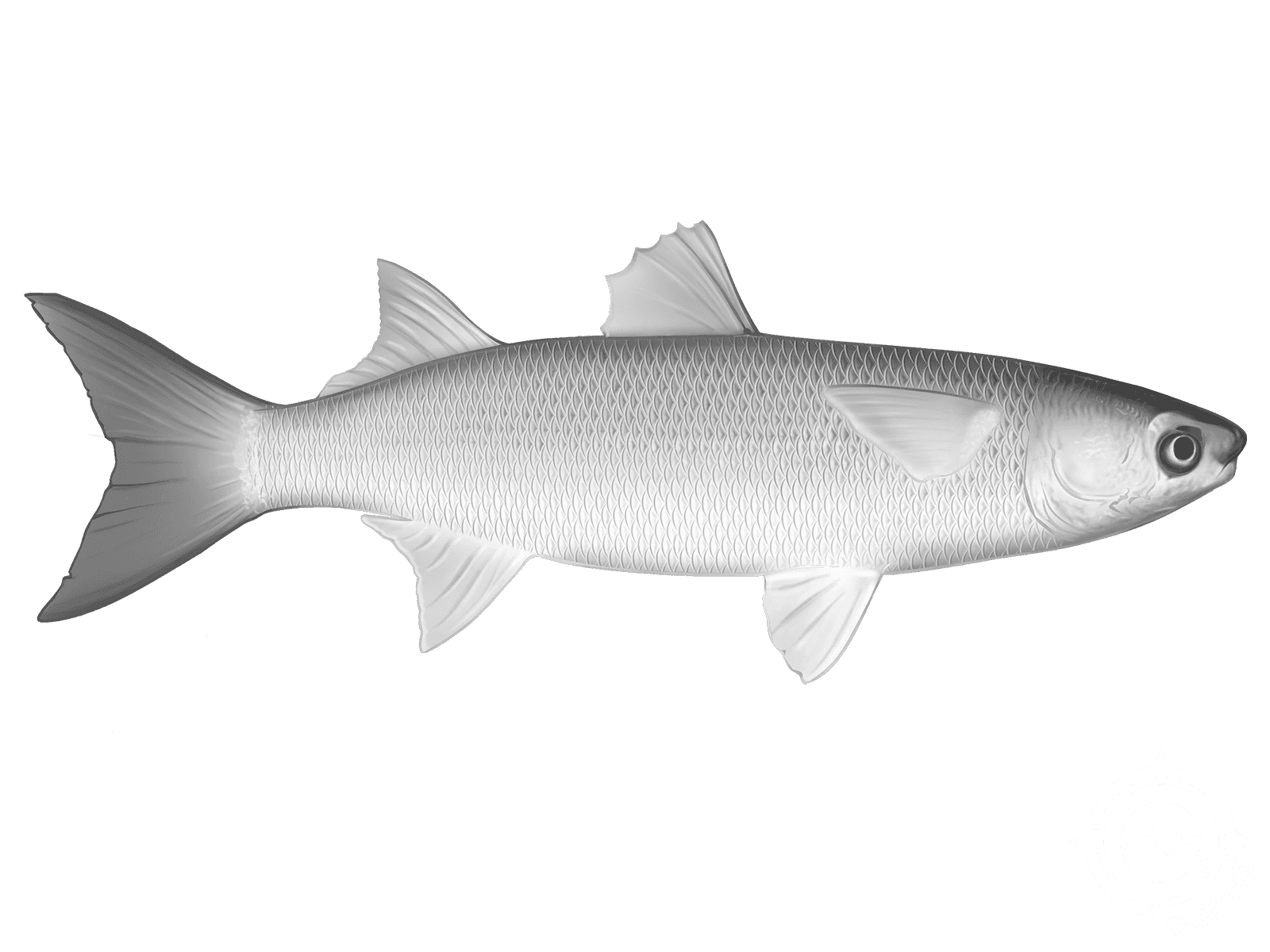Flathead Grey Mullet

Species Details
Mugil Cephalus
Mugilidae
Mugiliformes
Onshore, River
10 - 18 lbs.
20" - 47"
Flathead Grey Mullet (Mugil cephalus) Description
The flathead grey mullet are predominantly olive-brown on the back, with silvery sides that turn white approaching the belly. These fish have horizontal spots that give the illusion of horizontal stripes that run across its body. They have thin lips and a broad head. Their adipose eyelids are well developed.
This fish species are often confused with the white mullet (Mugil curema). A way to distinguish both fish is to look at the dorsal and anal fins. The white mullet have scales that extend towards the dorsal and anal fins. The flathead grey mullet have none. The flathead grey mullet also has nine anal fins while the white mullet only has eight.
Diet and Size
The average size of most flathead grey mullet is 20 inches but it can reach up to 47. It can reach the weight of up to 17 pounds. Female flathead grey mullet are slightly bigger than the male as they mature. The oldest fish of this species lived up to 16 years old.
This fish species like to gather in schools when feeding on aquatic vegetation along the bottom of the water. They also like to feed on dead plants and detritus. Juvenile flathead grey mullet consume zooplankton, but as they age, they begin to eat invertebrates such as crustaceans and worms.
Interesting Facts about Flathead Grey Mullet
- The flathead grey mullet can be prey to large fish, birds such as pelicans, and marine mammals, so they like to form schools for protection.
- This fish species can leap out of the water to escape their predator and to clear their gills.
- The flathead grey mullet are both fished and farmed. Their species is considered one of the most important food fish worldwide.
- South Korea and Venezuela report having the biggest catches of this fish.
- The roe of this fish species is a highly coveted salted and dried delicacy in countries such as Korea, Japan, Greece, Taiwan, Turkey, Egypt, and Italy.
Flathead Grey Mullet - Fishing Techniques
The flathead grey mullet are abundant in number and can be caught all year long. They are, however, best caught in summer and autumn.
One technique that anglers use when fishing for flathead grey mullet is to throw a few pieces of bread into the sea, particularly in calm waters or anywhere that has a lot of debris. Wait and see how they react to this lure, but don’t get too over excited as these fish are particularly wary of anglers.
As for the fishing gear, anglers can benefit from using a six hook sabiki with hooks sized 4 to 8, with a blue bait basket lined with small shrimp. Anglers can also use hardlines or rods using rigs with floats, making sure that to use ones that are appropriate for the size of the fish they are targeting as these gamefish are strong and will give a good fight. The lines or rods can be baited with bread, worms, or fish guts.
The flathead grey mullet can also be caught with fly fishing gear. Anglers can use tiny flies similar to ones you use for bonefish.
Habitat and Distribution
The flathead grey mullet is considered a cosmopolitan fish species. They can be found in tropical, subtropical, and temperate waters all over the world. They are distributed along the eastern part of the Pacific Ocean, from California to Chile and western Pacific, from Japan to Australia. They can also be found in the Western parts of the Indian and Atlantic Oceans. They can also occur in the eastern Atlantic Ocean, particularly the Mediterranean Sea and the Black Sea.
These fish species are found to occur in the freshwaters of the western part of the USA, ranging from the Colorado River to the Gala River. They are particularly abundant in the canals of the Gala River. Sadly, their population is declining in Arizona.
The flathead grey mullet like to swim steadily with a school in shallow waters over muddy or sandy areas with depths of about 10 meters. This fish species are highly tolerant of a wide range of salinity when they mature so they can be found in harbors, estuaries, as well as lagoons, rivers, and lakes. They can also live in brackish or even stagnant waters. However, they migrate back to the sea when they spawn.







